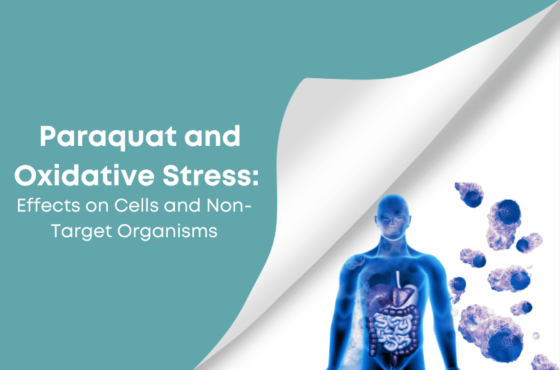In the United States, only licensed applicators are given access to the herbicide Paraquat.
Paraquat poisoning might not be so common in the country, but in some parts of Asia, South and Central Americas, and the Pacific Islands, Paraquat poisoning is the leading cause of fatal poisoning.
Not only that, but the toxic chemical has also been linked to an increased risk of Parkinson’s disease, which ultimately led to the filing of the first Paraquat lawsuit in 2017.
The complaint was filed on behalf of farmers and agricultural workers who were subsequently diagnosed with Parkinson’s after being exposed to Paraquat.
In fact, it has been reported that more than 70 percent of Paraquat poisonings lead to death.
What is Paraquat Used For?
The herbicide Paraquat has been available for commercial purposes since 1961. Since then, it has been one of the most widely used herbicides around the world.
The chemical is used primarily for weed and grass control, as well as a post-harvest drying agent.
In the United States, Paraquat is a restricted-use herbicide, which means only licensed applicators who have completed an Environmental Protection Agency (EPA)-approved training program can apply, mix, or load the toxic chemical.
Because of its toxicity, the Centers for Disease Control and Prevention (CDC) has been following Paraquat since the agency considers it to be more toxic compared to other herbicides.
One can be a victim of Paraquat poisoning through inhalation, ingestion, and skin absorption of the chemical.
Dozens of countries around the world, including China, Brazil and the European Union have already banned the use of Paraquat.
The bad news?
The dangerous pesticide is still being manufactured and sold in the United States.
What Does Paraquat Do To Humans?
Once inhaled, Paraquat can cause poisoning in patients which can then result in lung damage.
Aside from this, patients can also suffer from Paraquat poisoning after skin exposure or absorption. In this case, poisoning is more likely if the skin exposure lasts for a longer time, involves a concentrated version of the chemical, or if absorbed by a person whose skin has cuts, sores, or severe rash.
Lastly, once patients ingest a large amount of Paraquat, it can immediately cause direct damage once it comes into contact with the mouth, stomach, or intestines.
After Paraquat enters the body, it begins to spread in all areas of the body.
Paraquat causes toxic chemical reactions in several parts of the body, such as the lungs, kidneys, and liver.
Furthermore, in 2011, the journal Environmental Health Perspectives published results from a study that explored Parkinson’s disease and the possibility that it may be linked to pesticide use.
The research explained that Parkinson’s was associated with lifetime use of pesticides, with the supporting evidence that animal studies have suggested the pesticides Paraquat and Rotenone causes oxidative stress and blocks mitochondrial complex.
Paraquat specifically works by producing intracellular molecules that damage cells through oxidative stress.
Symptoms of Paraquat Poisoning
Patients are likely to have immediate pain and swelling of the mouth and throat following Paraquat ingestion.
What comes next are gastrointestinal symptoms including abdominal pain, nausea, vomiting, and diarrhea that may become bloody.
Severe gastrointestinal symptoms may lead to electrolyte abnormalities, dehydration, and low blood pressure.
Furthermore, adverse health effects can still develop within several days or several weeks after Paraquat ingestion, even with small to medium amounts of the chemical. These include:
- kidney failure
- heart failure
- lung scarring
- lung failure
On the other hand, Paraquat ingestion of large amounts of the chemical may result in the following symptoms in a matter of few hours or a few days:
- confusion
- liver failure
- acute kidney failure
- fast heart rate
- coma
- muscle weakness
- injury to the heart
- lung damage or scarring
- pulmonary edema (fluid in the lungs)
- seizures
- respiratory failure which can result in death
Despite these adverse health effects posed by the toxic chemical, Paraquat use is still on the rise in the United States.
In fact, according to a 2016 report from the National Water-Quality Assessment (NAWQA) project, usage of the herbicide in the country has doubled between 2006 and 2016.
This increase in Paraquat use also means an increase in exposure to Paraquat, as well as more people to suffer from poisoning due to the herbicide.
Aside from Paraquat poisonings, the toxic chemical has also been notorious for the other adverse effects it may cause on patients, including the possibility of cancer and birth defects, as well as Parkinson’s disease.
How is Paraquat Poisoning Diagnosed?
If you believe that you or your loved one may have suffered from Paraquat poisoning, you should immediately seek medical attention.
If you believe you have been poisoned through your food, you should take it to the medical facility for further testing.
Your doctor may order blood or urine tests to check for the chemical levels in your body. Blood tests may also help in evaluating organ damage.
These medical tests will also help health care providers in monitoring your overall health, as well as checking your electrolyte levels, hydration, and worsening organ function.
Patients with Paraquat poisoning should be monitored for the development of acute liver injury, renal failure, and respiratory failure.
The most severe clinical effect of Paraquat poisoning in patients is pulmonary toxicity which may result in pulmonary fibrosis and respiratory failure.
Treatment for Paraquat Poisoning
According to a case report published in the Journal of Family Medicine and Disease Prevention, there are currently no generally accepted guidelines on the treatment of patients who suffered from Paraquat poisoning.
However, the most common treatment options done in hospitals consist of prevention of gastrointestinal absorption of the chemical and its removal from the blood.
The hospital is most likely going to focus on getting Paraquat out of your system.
In case of patients who have managed to go to the hospital soon after ingestion of the herbicide, you may likely be given activated charcoal either to be taken orally or through a nasal tube.
But if Paraquat poisoning is more severe, removal of the chemical from the blood may be necessary, and can be performed through hemoperfusion.
This procedure aims to filter blood through the charcoal in order to remove Paraquat from your system, particularly from your lungs.
Doctors may also continue ordering blood and urine tests and monitor your vital signs to check for damage caused by Paraquat poisoning.
Unfortunately, the herbicide Paraquat is highly toxic and there is no known cure or antidote for it up to this day.
This is why early treatment is important, and may allow patients to avoid the permanent adverse health effects and long-term consequences of Paraquat poisoning.
How Long Does Paraquat Take to Kill?
According to the CDC, ingesting Paraquat causes heart, lung, liver, and kidney failure within several days to several weeks and can result in death up to 30 days after Paraquat ingestion.
Patients who suffer from large exposure are unlikely to survive, as chronic exposure to Paraquat can lead to lung damage as well as kidney and heart failure.
Accidental deaths and suicide due to Paraquat ingestion are also relatively common.
For instance, in China, around 5,000 deaths from Paraquat poisoning happen every year.
Is Roundup a Paraquat?
Believe it or not, Paraquat still managed to maintain its popularity in many countries across the world because of its fast-acting ability in killing weeds.
The toxic chemical is also being used to complement other herbicides, like glyphosate, more popularly known by its brand name, Roundup.
Glyphosate is the most widely used herbicide in the United States.
It is usually applied to genetically modified strains of corn, soybeans, and other produce engineered to withstand the use of glyphosate and grown on single-crop farms.
However, much like Paraquat, glyphosate or Roundup itself is also controversial.
In 2015, the International Agency for Research on Cancer classified glyphosate as “probably carcinogenic to humans.”
This prompted the Environmental Protection Agency (EPA) to seek new rules for the use of the pesticide.
Over the years of exposure to Roundup, many weeds have already developed resistance.
This ultimately led to an increase in renewed use of Paraquat and other known pesticide.



